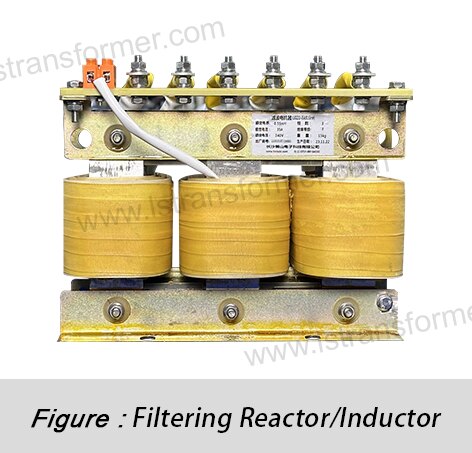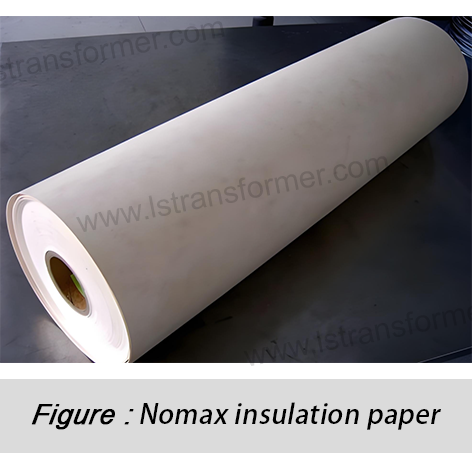La réduction de la durée de vie des réacteurs dans les environnements à haute température est-elle un problème ? — Stratégie d'optimisation double : matériaux et dissipation thermique
La durée de vie des réacteurs est-elle réduite dans des environnements à haute température ?
—Stratégie d'optimisation double : matériaux et dissipation thermique
Dans un contexte de transition énergétique mondiale et d'accélération de l'intelligence industrielle, la fiabilité et la durée de vie des réacteurs, composants essentiels des systèmes électriques, sont devenues une priorité croissante pour les fabricants d'équipements, les gestionnaires de réseaux et les utilisateurs industriels. Les environnements à haute température sont largement reconnus comme un accélérateur majeur du vieillissement des équipements électriques, faisant de la mise en place de contre-mesures efficaces contre la dégradation de la durée de vie induite par la température un enjeu majeur pour l'industrie. Cet article explore les mécanismes des impacts des hautes températures en s'appuyant sur les normes internationales et les pratiques d'ingénierie, et propose une double stratégie d'optimisation axée sur les matériaux et la dissipation thermique.
1. Comment les températures élevées « brûlent » la durée de vie des réacteurs : un avertissement de l'équation d'Arrhenius
La durée de vie d'un réacteur dépend de la durabilité de ses matériaux isolants organiques (par exemple, résine époxy, papier Nomex®, vernis imprégné). Les températures élevées provoquent la rupture des chaînes moléculaires, une oxydation accélérée et des décharges partielles plus intenses, accélérant considérablement le vieillissement irréversible.
● Équation de base pour quantifier les taux de vieillissement : l'équation d'Arrhenius
La relation entre la durée de vie (L) et la température absolue (T) est exprimée comme suit :
L = A * exp(Ea / (k * T))
L : Durée de vie prévue
A : Constante spécifique au matériau
Ea : Énergie d'activation pour le vieillissement des matériaux (eV)
k : constante de Boltzmann (8.617333262145 × 10⁻⁵ eV/K)
T : Température absolue (K)
Impact intuitif de la température : la règle des 10°C
Selon les normes IEEE C57.96 et CEI 60076-7, des études empiriques montrent que pour chaque augmentation soutenue de 6 à 10 °C de la température de fonctionnement, la durée de vie prévue d'un système d'isolation est divisée par deux. Par exemple, un système d'isolation de classe H (conçu pour 180 °C) fonctionnant en continu à 190 °C peut voir sa durée de vie réduite à seulement 50 % de sa valeur nominale.
Classe d'isolation | Température nominale (℃) | Limite de point chaud (℃) | Référence de durée de vie | Indice de température TI (℃) |
B (130) | 130 | 140 | ~ 20 ans | ≥130 (≥20 000 heures) |
F (155) | 155 | 175 | ~ 20 ans | ≥155 (≥20 000 heures) |
H (180) | 180 | 195 | ~ 20 ans | ≥180 (≥20 000 heures) |
C (>180) | > 180 | > 195 | Dépend du matériau | ≥200 (≥20 000 heures) |
Tableau 1 : Classes de matériaux isolants et relations température-durée de vie
(Basé sur la norme IEC 60085, norme IEEE C57.12.00)
2. Optimisation des matériaux : créer des « gènes » résistants aux hautes températures
La résilience des réacteurs à haute température dépend fondamentalement de la stabilité moléculaire de leurs matériaux isolants. Les matériaux organiques traditionnels (par exemple, les isolants de classe A/B) sont sujets à la rupture des chaînes moléculaires, à la fissuration oxydative et aux décharges partielles sous des températures élevées prolongées, ce qui entraîne une dégradation irréversible de l'isolation. La science moderne des matériaux a dépassé les limites thermiques grâce à trois approches clés, permettant aux réacteurs d'atteindre une durée de vie prolongée, même dans des environnements extrêmes.
●Mise à niveau vers des systèmes de matériaux isolants haute température
●Choix des matériaux
(1)(Film polyimide (Kapton®) :Température de transition vitreuse (Tg) > 360°C, température de décomposition thermique > 500°C, avec des cycles aromatiques et des liaisons imides offrant une stabilité ultra élevée.
(2)Papier aramide Nomex® :Résistance thermique à long terme jusqu'à 220°C, avec des réseaux de liaisons hydrogène maintenant la résistance mécanique à haute température.
(3) Systèmes d'imprégnation de résine de silicone :Plage de fonctionnement de -50°C à +250°C, avec une énergie de liaison Si-O (452 kJ/mol) dépassant largement les liaisons CC (346 kJ/mol).
●Comparaison des modes de défaillance
(1)Résine époxy traditionnelle :Souffre d'une « dégradation oxydative thermique » au-dessus de 180°C, avec rupture aléatoire de la chaîne moléculaire provoquant une forte augmentation du facteur de perte diélectrique (tanδ).
(2) Matériaux hybrides époxy/organosilicium modifiés :Incorpore des segments de siloxane pour former des réseaux réticulés Si-O-Si à haute température, retardant la dégradation.
●Données de validation technique
Test IEEE 117 (vieillissement accéléré) : l'époxy modifié de classe H n'a montré qu'une baisse de 12 % de la tension de claquage après 10 000 heures à 200 °C, contre > 40 % pour les matériaux traditionnels.
●Nanocomposites : amélioration synergique de la conductivité thermique et des propriétés diélectriques
Type de remplissage | Conductivité thermique (W/mK) | Constante diélectrique (ε) | Rapport de dopage optimal | Le rôle principal |
Al₂O₃ | 30-40 | 9-10 | 3-5 % en poids | Augmente la conductivité thermique, supprime l'arborescence électrique |
BN | 300-400 | 4-5 | 1-3 % en poids | Dissipation thermique anisotrope, réduit les pertes diélectriques |
SiC | 120-150 | 6-7 | 2-4 % en poids | Homogénéisation du champ, minimise les décharges partielles |
●Mécanisme
(1)Optimisation du chemin thermique :Les nanoparticules forment des « réseaux de percolation thermique » dans la matrice, augmentant la conductivité thermique composite de 0.2 W/mK à 0.6-1.2 W/mK (amélioration de 3 à 6 fois).
(2) Suppression de l'arborescence électrique :Les nanoparticules agissent comme des « centres de piégeage » pour capturer les électrons à haute énergie, retardant ainsi la dégradation de l'isolation (les expériences montrent une tension d'amorçage de décharge partielle (PDIV) 20 à 30 % plus élevée).
●Clés de fabrication
(1)Technologie de dispersion :Traitement par ultrasons + modification de l'agent de couplage silane pour éviter l'agglomération des nanoparticules (les agglomérats > 100 nm provoquent une distorsion du champ).
(2) Processus de durcissement :Le durcissement par gradient de température (par exemple, 80°C → 120°C → 160°C) assure une distribution uniforme de la charge.
● Innovations en matière d'imprégnation sous vide et d'encapsulation
Problème traditionnel : les espaces d'air entre les couches d'enroulement provoquent des surchauffes localisées (différences de température de 15-20°C), accélérant le vieillissement de l'isolation.
●Technologie de silicone liquide VPI
(1)Paramètres du processus :Vide < 1 mbar, pression 0.5-0.8 MPa, assurant la pénétration du silicone dans les pores à l'échelle du micron.
(2)Avantages :Après durcissement, le coefficient de dilatation thermique (CTE) correspond aux enroulements en cuivre, évitant ainsi les fissures dues aux cycles thermiques.
●Comparaison de cas
(1) Réacteur non imprégné : après 1 an à 150°C, les niveaux de décharge partielle sont passés de 5pC à 50pC entre les couches d'enroulement.
(2)Réacteur traité au VPI : Dans les mêmes conditions, les décharges sont restées stables à <10pC.
3. Optimisation de la dissipation thermique : construire un « système de refroidissement » efficace
La capacité de dissipation thermique d'un réacteur détermine directement son élévation de température. Guidée par la loi de Stefan-Boltzmann (refroidissement radiatif) et la loi de Newton (refroidissement par convection), une gestion thermique efficace est obtenue grâce à la conception structurelle, à l'optimisation de la dynamique des fluides et à un contrôle intelligent.
●Conception de précision du refroidissement par air forcé (FAA/FAF)
●Optimisation du flux d'air
(1)Principes de conception des conduits (selon la norme IEC 60076-16) :
-Vitesse de l'air d'admission :4-6 m/s (trop bas réduit la chaleur échange ; un niveau trop élevé provoque un bruit turbulent).
-Perte de charge :<200 Pa pour éviter la surcharge du ventilateur.
(2)Cas de simulation CFD :
Un déflecteur d’air optimisé a amélioré l’uniformité du flux d’air de 40 % et réduit l’augmentation de la température du point chaud de 12 °C dans un réacteur de type sec.
●Équation de dimensionnement du ventilateur
Débit d'air requis :
Q = (P_loss × η) / (ρ × Cp × ΔT)
P_loss : Pertes totales (W)
η : Efficacité de refroidissement (généralement 0.6-0.8)
ρ : Densité de l'air (1.2 kg/m³ à 20°C)
Cp : Capacité thermique massique de l'air (1005 J/kg·K)
ΔT : Élévation de température admissible (par exemple, 25 K)
●Contrôle de vitesse intelligent
(1)Courbe température-vitesse :Les ventilateurs contrôlés par PWM fonctionnent à pleine vitesse à 40 °C ambiant, chutant à 50 % de leur vitesse à 20 °C.
(2)Réduction du bruit :Les ventilateurs centrifuges à courbure arrière réduisent le bruit de 5 à 8 dB(A) par rapport aux modèles à courbure avant.
● Applications révolutionnaires du refroidissement liquide
Paramètre | Refroidissement à l'huile minérale | Refroidissement par eau déionisée | Refroidissement à l'ester synthétique |
Coefficient de transfert thermique (W/m²K) | 50-200 | 300-1000 | 100-300 |
Performance d'isolation | Excellent (ε≈2.2) | Nécessite des tuyaux isolés | Excellent (ε≈3.0) |
Besoins d'entretien | Filtrage régulier | Traitement anti-calcaire | Peu d'entretien |
Tableau : Refroidissement direct par huile et refroidissement par eau
● Intégration de caloducs
(1) Principe :L'évaporateur absorbe la chaleur et vaporise le liquide de refroidissement (par exemple, l'ammoniac/l'acétone) ; la vapeur libère de la chaleur latente au condenseur avant de revenir, atteignant une conductivité thermique effective de 5 000 à 15 000 W/mK.
(2) Méthodes d'installation :
-Enroulements intérieurs : Intégrer des caloducs de 8 mm de diamètre dans des barres de cuivre, limitant les différences de température axiales à < 5 °C.
-Radiateurs externes : connectez les caloducs aux réseaux d'ailettes en aluminium, triplant ainsi la zone de dissipation thermique.
● Minimiser la résistance thermique structurelle
(1) Optimisation de l'enroulement
Calcul des pertes par fil de Litz (courants de Foucault à haute fréquence) :
P_tourbillon = (π² * f² * d² * B²) / (6ρ)
d : Diamètre du fil (mm)
B : Densité de flux magnétique (T)
L'utilisation de fil de Litz à brins fins de 0.1 mm réduit les pertes par tourbillon de 70 % à 100 kHz.
(2) Sélection du matériau d'interface
Type d'ouvrage | Conductivité thermique (W/mK) | Plage de température | Méthode d'application |
Pâte thermique | 1-5 | 40 ° C ~ 200 ° C | Application manuelle |
Matériau à changement de phase (PCM) | 3-8 | 50 ° C ~ 180 ° C | Pressage de tôles préformées |
Tampons en graphène | 10-30 | 50 ° C ~ 300 ° C | Découpé au laser |
● Engineering Insight : la conception synergique crée de la valeur
(1)Analyse du couplage matériau-refroidissement :L'isolation à haute conductivité thermique réduit les gradients de température internes, augmentant ainsi l'efficacité du système de refroidissement de > 20 %.
(2) Modèle de coût du cycle de vie (LCC) :Alors que les nanomatériaux/VPI augmentent les coûts initiaux de 15 à 25 %, la baisse de 40 % des taux de défaillance qui en résulte réduit les dépenses de maintenance.
Grâce à ces optimisations, la durée de vie des réacteurs dans des environnements à haute température peut passer de 5 à 7 ans à plus de 15 ans. Par exemple, un projet de champ pétrolier au Moyen-Orient utilisant un refroidissement liquide par époxy modifié au nitrure de silicium et caloduc a fonctionné sans problème pendant 3 ans à une température ambiante de 55 °C, avec une augmentation de température constamment inférieure à 65 K (limite de classe F de la norme CEI 60076-12 : 100 K).
Prolonger la durée de vie des réacteurs dans des environnements à haute température nécessite plus que des améliorations ponctuelles. Cela exige des avancées parallèles au niveau moléculaire (matériaux résistants à la chaleur) et au niveau du système (refroidissement efficace) :
1. Les matériaux sont fondamentaux : adoptez une isolation de classe H/C, des nanocomposites et une imprégnation de silicone pour augmenter les seuils thermiques.
2. Le refroidissement est essentiel : mettez en œuvre un système d’air pulsé intelligent, un refroidissement liquide avancé ou des caloducs pour un transfert de chaleur rapide.
3. La conception synergique garantit le succès : combinez la réduction des pertes (fil de Litz) avec l'optimisation du chemin thermique (matériaux d'interface).
Dans un contexte de réchauffement climatique et d'augmentation des densités de puissance, le respect des normes internationales (CEI/IEEE) et la mise en œuvre de synergies entre matériaux et refroidissement sont désormais essentiels pour un fonctionnement fiable et durable des réacteurs. Cela permet non seulement de réduire les risques pour le réseau et les coûts de maintenance, mais aussi de renforcer la durabilité des infrastructures énergétiques mondiales.
Contactez-Nous
LuShan, HNE.1975, est un fabricant chinois spécialisé dans les transformateurs et réacteurs de puissance depuis plus de 50 ans. Ses principaux produits sont :Transformateur monophasé, transformateurs d'isolement triphasés, transformateur électrique, transformateur de distribution, transformateur abaisseur et élévateur, transformateur basse tension, transformateur haute tension, transformateur de contrôle, transformateur toroïdal, transformateur à noyau R ; inductances CC, réacteurs CA, réacteur de filtrage, réacteur de ligne et de charge, selfs, réacteur de filtrage et produits intermédiaires à haute fréquence.
Nos transformateurs et réacteurs de puissance sont largement utilisés dans 10 domaines d'application : transport rapide, engins de chantier, énergie renouvelable, fabrication intelligente, équipement médical, prévention des explosions de mines de charbon, système d'excitation, frittage sous vide (four), climatisation centrale.
En savoir plus sur le transformateur de puissance et le réacteur :www.lstransformer.com.
Si vous souhaitez obtenir des solutions personnalisées pour les transformateurs ou les réacteurs, veuillez nous contacter.
WhatsApp:+86 17267488565
Courriel : marketing@hnlsdz.com

 EN
EN
 FR
FR DE
DE ES
ES


